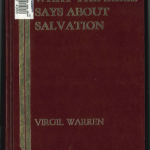the Library of Congress system mostly makes sense except when this happens
LC doesn’t care about book series so it basically just puts them in alphabetical order by title. everything that author has written has the same cutter number (in Snicket’s case, .S6795) and then the first couple of letters of the book’s title come next. so EVERYTHING by that author is all together, but completely out of sequential order. and I hate it.
Yuck! Not helpful to a patron browsing the shelf.
You could class the series together (and indicate that decision in the series authority record) and then give each title your chosen classification plus an enumeration like “v.1″ or “no.2″ or whatever is appropriate.
I’ve also been known to fudge cutter numbers when I want books to sit a certain way on the shelf; that’s easiest to do when you get the whole series at once.

